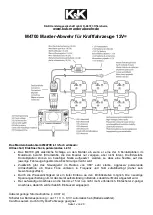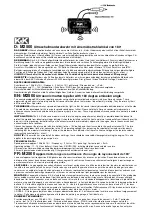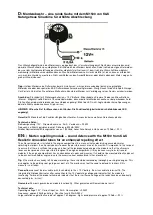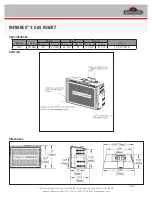
AN-MPU-x000A-01
Document Number: AN-MPU-x000A-01
Page 11 of 14
Revision: 1.1
Date: 06/12 /2015
5.
ANALYZING SENSOR DATA ISSUES DUE TO SENSOR PLACEMENT
5.1.
OVERVIEW
As stated in the previous sections, sensor data will be affected by the location of the device and its surrounding components. This
section describes the tools that can be used to analyze the sensor data, to characterize and correct issues of magnetic distortion,
package stress, noise and thermal conditions. InvenSense recommends our customers contact their local InvenSense support team
when the need to characterize devices using InvenSense MPUs arises.
5.2.
ANALYZING SENSOR DATA
When possible, the orientation of the device and magnetic data should be analyzed simultaneously, in order to characterize sensor
angular accuracy.
5.2.1.1.
InvenSense Sensor Test Tools
InvenSense software releases are packaged with test tools that provide the capability to collect sensor data at run-
time. It is recommended to use the test tools provided by InvenSense to first verify if the sensor is responding
correctly and the sensor data is within spec. Analyzing run-time sensor data will help in detecting problems with
sensor performance.
5.2.1.2.
Third Party Sensor Tools
Third party tools such as Microsoft’s Sensor Diagnostic Tool or Traceview can be also used to collect run-time sensor
data to detect problems with sensor performance. These tools provide capabilities to save the individual
accelerometer, gyroscope and compass data to a comma separated (CSV) file. The CSV data can be analyzed and
sensor data can be graphed to detect placement related problems.
5.2.1.3.
Sensor Data Collection
InvenSense software has the capability to log sensor data to a file during device operation. The software provides the
capability to collect raw as well as calibrated sensor data. This gives us the option to replay the sensor data at a later
time and detect any errors due to placement issues.
Sensor data collected in this fashion can be post processed using mathematical analysis software to detect the
effects of magnetic distortion, package stress, noise and thermal conditions, and assist in mitigation of those effects.
































